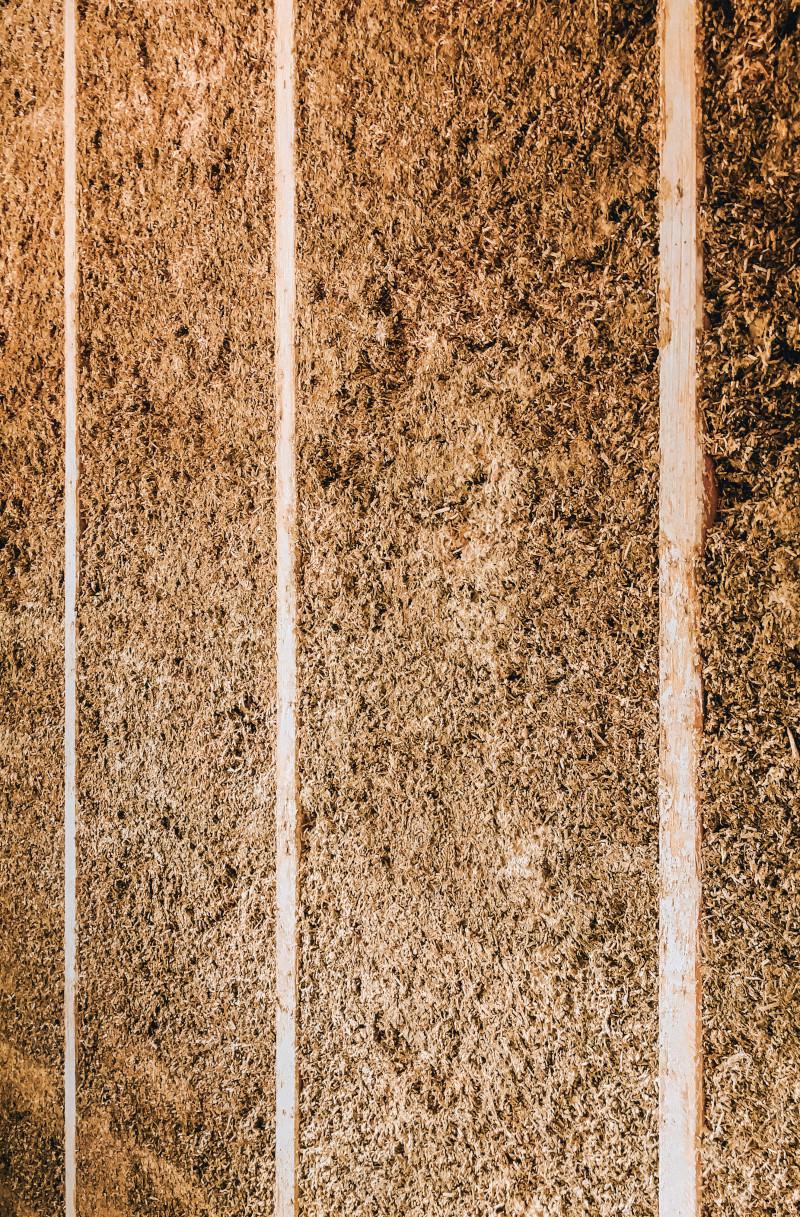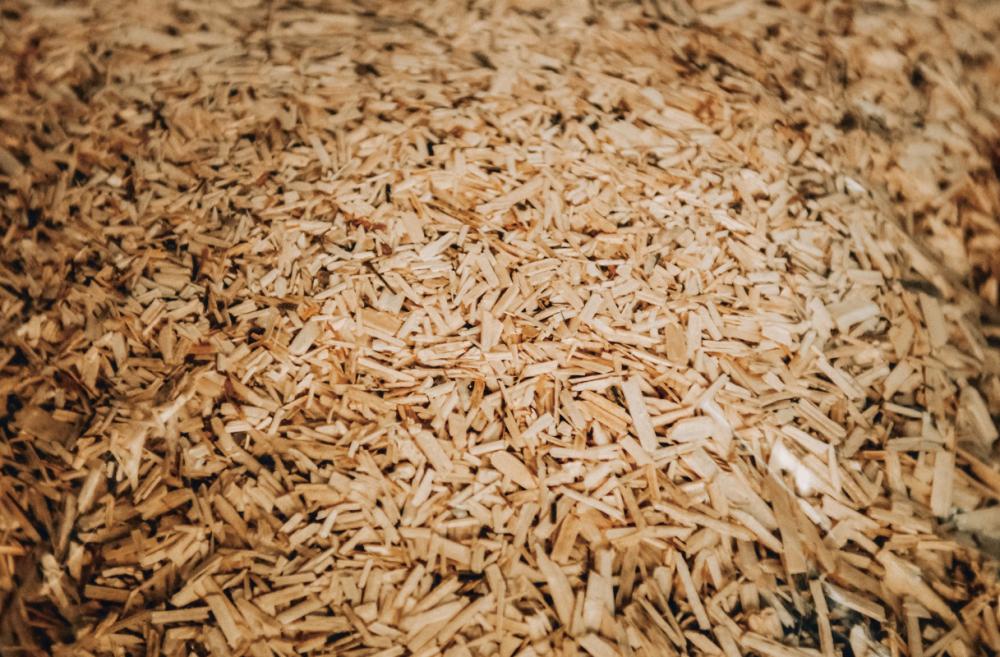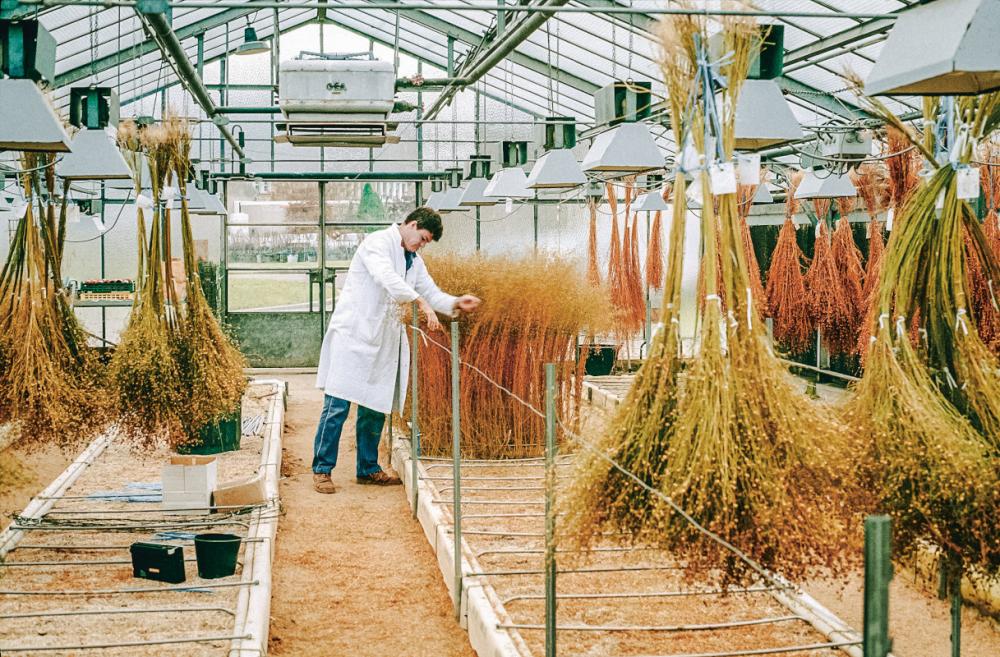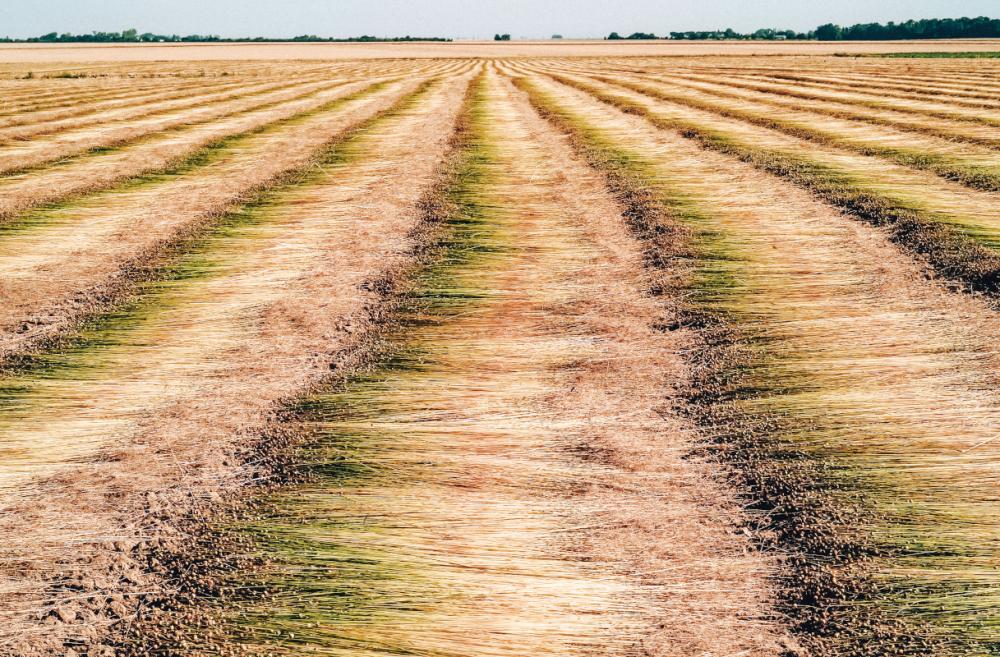Ressources dossier
BioeconomyBiobased construction materials, a sustainable solution?
Published on 16 January 2023
To read in this dossier
[INFOGRAPHICS] Biomaterials: origins, uses and life cycles at a glance
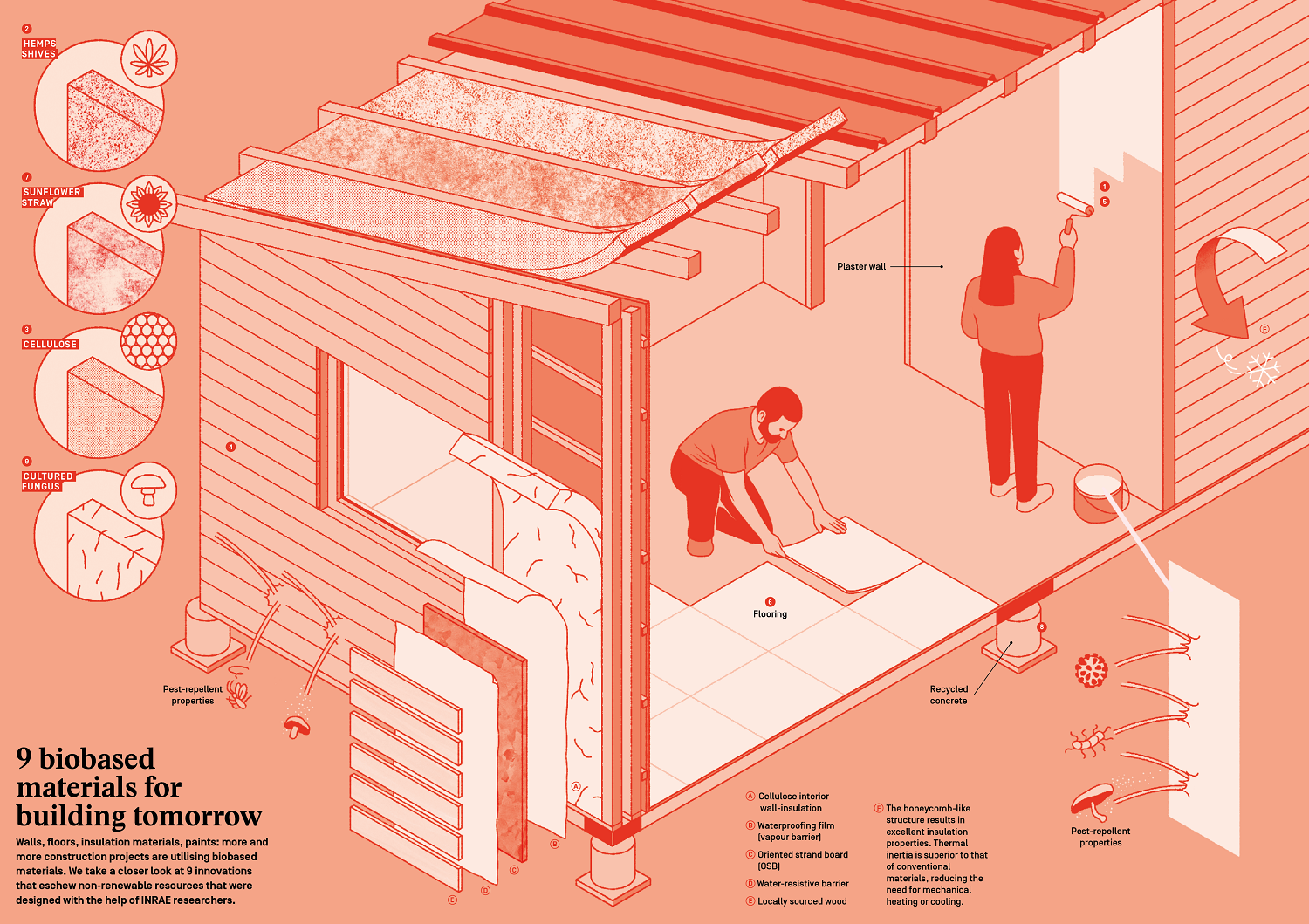
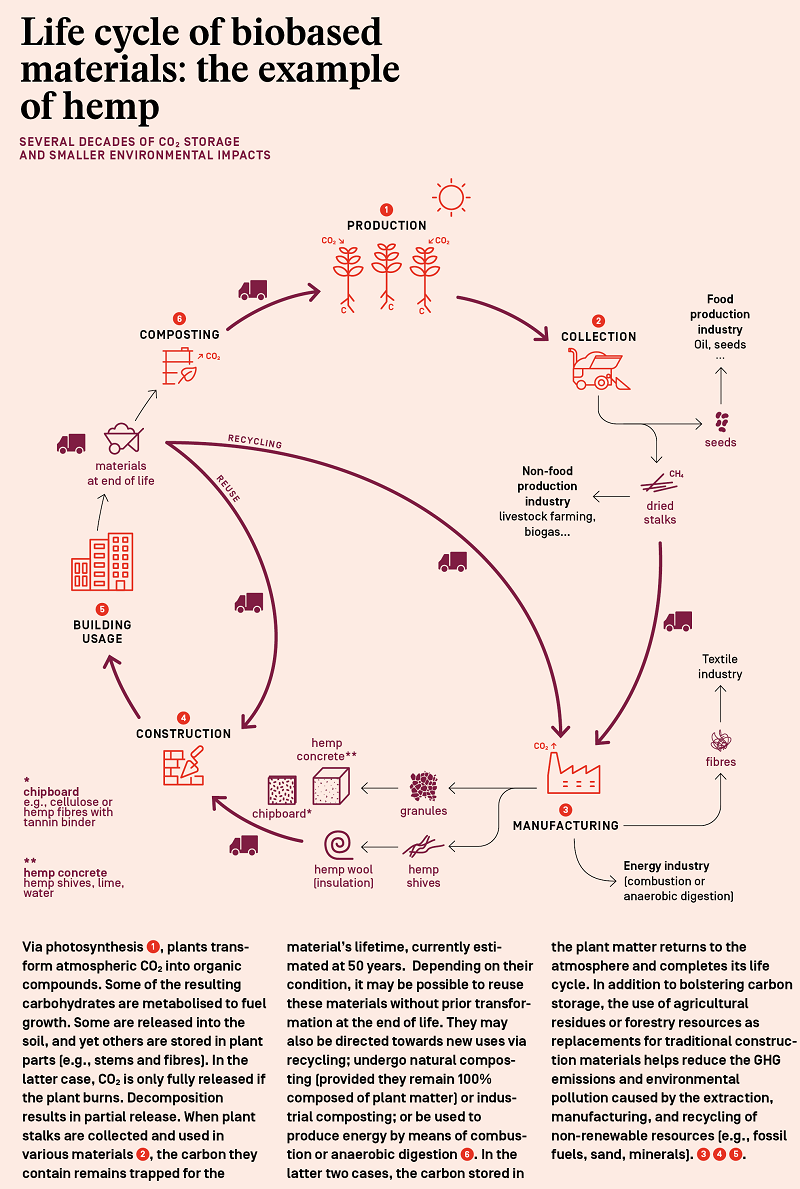
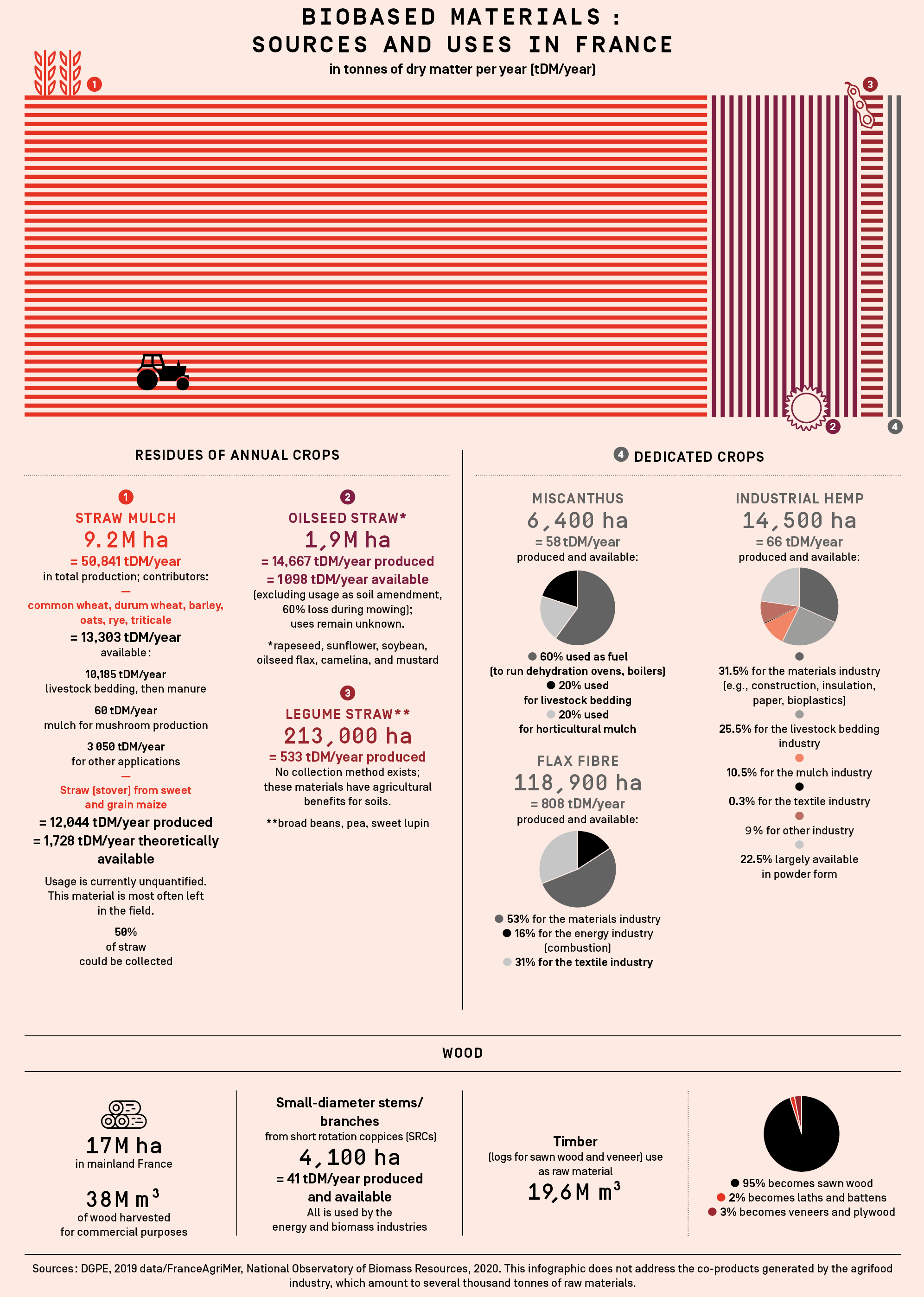
Glossary
Biomass: Any organic matter from plants or animals that is renewable on a human time scale. Examples include crops, pastures, forests, and farm animals (e.g., livestock, fish, animal waste). This non-fossilised material can be exploited in various ways. For instance, it can be used to feed humans or animals, manufacture diverse products, or generate heat or electricity.
Biobased product: An industrial product that is partially or totally derived from biomass and that is used neither as food nor energy. This term is currently employed for various materials (bioplastics and composites) and chemical compounds. These products can be obtained from different types of biomass: oil and protein crops, starch and sugar plants, forestry resources, herbaceous plants, and organic industrial co-products or by-products. They are not necessarily biodegradable.
Ecodesign: A scientific, technical, and economic approach aimed at designing and developing products that are more environmentally friendly.
Renewable carbon: Carbon originating from rapidly renewable biological resources whose consumption does not increase the net amount of CO2 in the atmosphere.
Bioeconomy: An economy based on photosynthetic resources and, more broadly, on living resources. Its functional basis is the effective creation of value from biomass production and mobilisation. In a bioeconomy, maximum use is made of solar energy, which is a free, abundant, and renewable resource.
Biosphere: All of the ecosystems (i.e., living organisms and their abiotic environments) found on Earth, whether in the soil, water, or atmosphere.
Technosphere: Scientific concept that refers to materials created by humans that do not exist in a natural state (e.g., plastics, composite materials). It consists of objects that are currently in use as well as those that have been discarded, including those present in the atmosphere.
Carbon sinks: Ecosystem components (e.g., oceans, plants, soils) that absorb more atmospheric carbon than they release. This capacity depends on various factors, and, under certain conditions, carbon sinks may become carbon sources.
-
Sarah-Louise Filleux, Pierre-Yves Lerayer, Yann Chavance
Authors / Translated by Jessica Pearce
-
Monique Axelos & Michael O'Donohue
Scientific directors
-
Arthur Bonifay
Illustrator


